Product bundling has always been a thing from McDo's combo meals to gift packages...but how do you get it right from psychology to pricing?

Product bundling has always been a thing from McDo's combo meals to gift packages...but how do you get it right from psychology to pricing?
Once upon a time, there was a King. In 1973, the King decided to sell his products in combo meals.
Believe it or not, Burger King was the first to invent the idea of selling toys with their burgers.
But by 1978, a competing kingdom was quick to steal and rebrand the combo meal.
Can you guess who that was?
That’s right, McDonald’s (as ever) proved to be the stronger empire.
A year after Burger King thought of bundling different products together at a discounted price – McDonald’s invented their extra value Happy Meal for children. Happy Meals now account for around $10 billion in sales per day.
In the battlefield of burgers, McDonald’s always comes out on top.
How do they do it?
The success of the Happy Meal can actually be traced back to a concept called product bundling.
This article will describe product bundling in full. But to go from product bundling as Burger King thought of it, to an international phenomenon like Happy Meal, it takes a strong product bundling strategy.
This is your go-to article to inform that strategy and elevate the product discovery experience online. Plus, I’ll take you through:
As an eCommerce pro, get your product bundling strategy right and you’ll see increased product sales, repurpose your unwanted products, and keep your inventory in check.

Product bundling is when two or more products are sold together at a discounted price. This comes in two forms:
In eCommerce, how does product bundling compare to cross or up-selling?
Cross-selling and up-selling suggest additional product recommendations or add-ons at checkout. So instead of suggesting similar products – as you’d see with many product recommendations – you’re putting products you want to sell together.
Product bundling, on the other hand, takes multiple products from your collection, whether similar or not, and offers them as a package.

Product bundles effectively mean that you’re helping your customers:
When we start to talk about decision-making online, we enter the realm of psychology (woohoo, our favorite!).

Dior’s luxury bundle curates limited edition products together.
The heuristic (i.e., mental shortcut) behind bundling is always the same: Buying in ‘bulk’ means that products come at a cheaper price.
This cognitive bias makes product bundling effective on a subconscious level – cheaper is always better, right?
Well, not always.
For luxury brands, cheaper is actually contrary to the value perception of their products. I hate to break it to you, but the psychology of product bundling will differ per brand.
Which means that you need to take into account your shopper’s purchasing habits and decisions when it comes to leveraging a product bundling strategy.
Let’s take a look at some psychological principles that will drive product bundling strategy.

Mental accounting is when a consumer budgets their finances and spending. We’ve all been there, divvying up our monthly salaries for groceries, leisure, or rent.
Organizing my finances in this way makes me happy when I can reach a certain goal… and not so happy when I overdo it (...more often than not).
Product bundles facilitate mental accounting for the consumer.
For instance, buying a massage machine by itself might seem irrational and go in the mental bucket ‘unnecessary purchase’.
But buying a massage machine with a foam roller could go into the bucket ‘sports health’ which has more perceived value than a simple one-off purchase.

Product bundling could rationalize the value of your products and facilitate mental accounting for your price-sensitive shoppers.
“Mental accounting creates a sense of restraint and organization for the consumer. It’s a system that – when shoppers can stick to it – creates a great deal of mental relief. For product bundling to adhere to this, brands need to sell on value rather than price.” - Partick Oberstadt, Behavioral Designer at Crobox
Aesop’s travel kit curates products perfect for traveling, to help shoppers navigate their (very similar) product collection.

Choice overload is on your eCommerce’s Most Wanted list. I get it. And for shoppers, too many choices causes:
Product bundling can help you narrow down your collection in a way that benefits the shopper’s decision-making.
Especially for customers less motivated to process information, bundles cut the search time in half, and facilitate the overall product discovery experience.
“Think about it. If you normally have the choice between thirty products but now only have to choose between three bundles, this will make the decision easier. Online shoppers are always looking for ease and convenience, and good bundles will be that shortcut to checkout.” - Patrick Oberstadt, Behavioral Psychologist at Crobox

The other day I bought a Scandinavian-style table. It looked great in my flat. Until I realized my antique wardrobe now felt kind of underdressed compared to the new table.
So I exchanged it for a matching Scandinavian wardrobe.
In reality, I could have upgraded my whole house – but then I’d be no better than Denis Diderot, that handsome devil you see above.
Diderot, after buying a luxurious robe, couldn’t stop buying more and more until his whole house matched the opulence of that first purchase.
Apple also leverages the Diderot Effect. Meaning, it’s almost impossible to find an Apple customer who only has one Apple product.
Making Apple another strong competitor in the product bundling game:
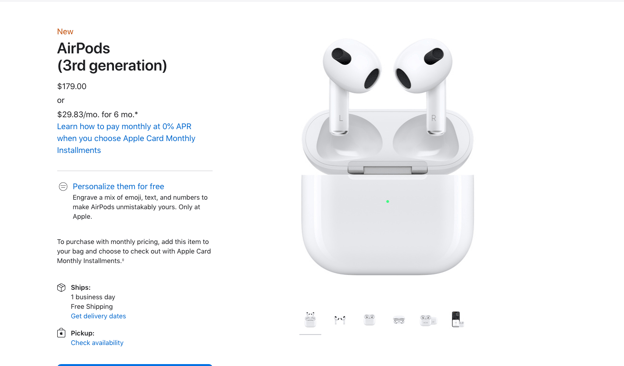
They always sell their Macbooks with chargers. Their AirPods come with a case. Apple makes product bundling so seamless that even Diderot would be instantly satisfied with the original, bundled purchase.

IKEA’s display rooms are an example of product bundling that leverages the Diderot Effect. The difference is that they’re not selling on price, but rather on imagination.
In short, product bundling not only helps innovate your product offering but will make your collection more attractive on a psychological level.
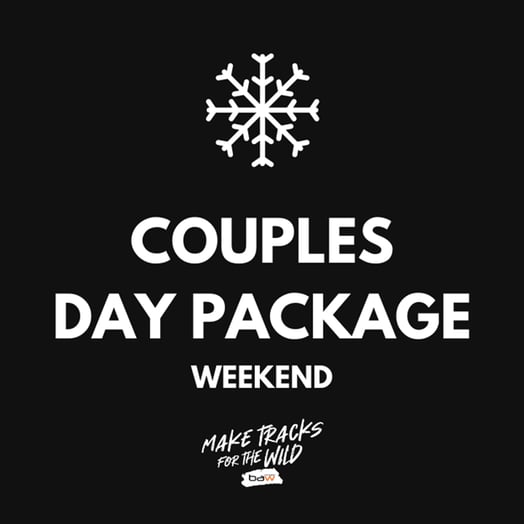
Spa or holiday packages are also good examples of effective product bundling.
The great thing about product bundling is that,
a) you are curating a set of products, and
b) you can appeal to both browsers and goal-oriented shoppers.
What are some other advantages and disadvantages of product bundling?
To take your product bundling strategy to the next level, you need to challenge these disadvantages.
And what better way than to refine your product bundling pricing?

The point of great bundles is to offer more value for less price, right?
What about taking a bunch of underperforming products you want to get rid of, and selling them at a slashed price?
Your product bundling strategy will fall short if you only offer pure bundles. In a study by Harvard Business School’s Vineet Kumar, he found that (contrary to popular belief),
“It’s crucial to allow flexibility to the consumer”.
This is important for your pricing strategy. For example, Nintendo found that when they forced people to buy products in bundles, their sales decreased by 20%.
Kumar discovered that a better product bundling strategy was for customers to choose which products to buy together. That way, shoppers can feel autonomous in their choice of price as well.

Leader bundling example. The leader is the mixer with optional add-ons for a bundled price.
Another clever way to leverage your product bundling pricing is to offer a product with a higher price-point coupled with a product with a low price-point.
Psychologically, price anchoring in this way will reduce the friction of paying when it comes to making a purchase decision for higher-margin products.
You see this friction in how Easyjet offers price bundling: Their USP is cheap flights but it’s quite expensive to check-in luggage.
Which almost always causes friction (demonstrated by frustrated customers at the gate...yours truly included 😡).
For your product bundling pricing to work, test different strategies:
Let’s have a look at three strong examples of product bundling – where the pricing strategy is key.
The Beard Struggle
It’s not often a customer will buy a beard comb by itself. In fact, bundling it with other beard care products actually makes the comb go from nice-to-have to need-to-have.
It’s the clever way The Beard Struggle sells all of their products. Calling them ‘kits’, ‘collections’, and ‘systems’ to enforce the necessity of the bundle itself.
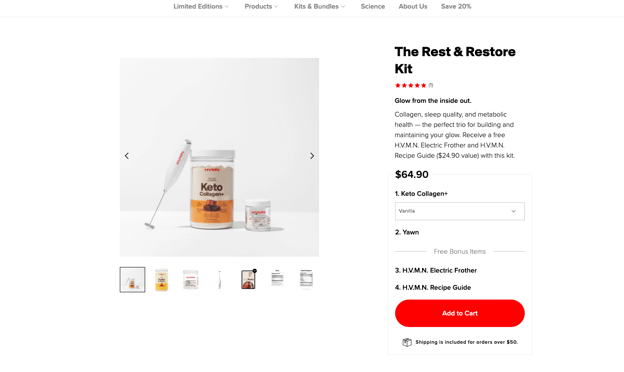
HVMN’s worst seller could be the electric frother since this doesn’t fit with the product discovery behavior of the target audience (individuals trying the keto diet).
If you’re a running shoe brand, you could sell a ‘running kit’ where your top seller (e.g., running shoe) is paired with your worst seller (e.g., sports socks).
Pairing top and worst sellers is not only a great way to make your worst sellers stand out again but can help you get rid of excess inventory.
Which we all know was a big headache during the pandemic.
For this to work, you need to monitor revenue from your most profitable products and SKUs. You could actually relieve your brand of dead stock by pairing top and worst performers together.
The Body Shop

The retail season is full of product bundling opportunities. Valentine’s day puts flowers and chocolate together, the back-to-school season offers pencil cases with pens and a backpack.
The Body Shop is also great at bundling per occasion. In this example, they take products that have similar ingredients and bundle them together as a Christmas gift (‘strawberry treats’).

Dive into your analytics to see when your products perform. For example, analyzing daily buys and views over a period of time will help you manage product sales and track trends.
If your product sales spike over the December period, this could mean you have the opportunity to create Christmas bundles and sell them as gift recommendations.
The gift-giving season is the perfect opportunity to repurpose your products into bundles.
It’s the gift that keeps giving.
Bed Bath & Beyond

By now you know the importance of discounting your bundle price. This is the most appealing benefit of bundles.
Bed Bath & Beyond goes one step further, offering a bundle on Cyber Monday. Which includes four pans at a cheap price.

For slashed pricing to work (and that’s not always a given) – emphasize the discounted nature of what you’re selling through:
This will often work for similar products. For products that you want to get rid of, I recommend leveraging leader bundling instead.
For big retail discount events like Black Friday or Cyber Monday, cheap prices are the expectation. But if you’re a luxury brand, you may want to rethink emphasizing savings.
Luxury consumers shop in different ways, and many actually value the price-point and uniqueness of what they’re buying. For more on the psychology of the luxury consumer, download our Luxury Report.
HelloFresh

Consumers trust HelloFresh: A subscription package that offers bundled ingredients to make a recipe. That’s because the recipes are curated by the experts.
It’s a perfect bundling strategy that leverages Authority, the behavioral principle that people trust those in charge.
Speaking of which – let’s ask the expert why this is so effective.
“Our product analysts and menu planners analyze data to decide what types of recipes are needed – for e.g., if we have many broccoli recipes but not enough cauliflower ones, then it might be time for a new one. We then discuss our ideas, brainstorm with the team, and test cook in the kitchen. This then goes to a test panel and a menu planner to see what works in a package. We have many ingredients to choose from, and we continue to onboard new ingredients in our system so we have a great database of things we can mix and match.” - Iris Van Der Haagen, Recipe Developer at HelloFresh
There are a few things Iris mentions that work to elevate a basic product bundling strategy to a great one (plus one that leverages your brand expertise).
Here they are:

I bet you were wondering but what about for luxury retail?
Don’t worry, I’ve got you covered.
For luxury bundling, it’s imperative to leverage your expertise and authority. Much like HelloFresh, only with a more personalized focus.

For example, Chanel bundles their two perfumes together into a ‘limited edition’ campaign.
On the product detail page (PDP), the shopper can see both products broken down with the option to buy them separately.
While product bundling will work for luxury, you need to show that you’re:
As a bonus, you could put a product bundle as a recommendation after your product finder.
For luxury brands, this is a good way to show you’ve been listening to the customer’s needs and curating a combination of products for them to buy.

See Crobox's Product Insights dashboard.
The way you frame your bundle will anticipate its effectiveness. For framing to work, you need to understand your product analytics better, so you can grasp what metrics drive behavior and how to optimize these.
Rather than selling on monetary benefit, sell your bundles in a way that will benefit the life of the end customer.
Pushing excess products is no longer the goal of a good bundling strategy. Instead, sell combinations that matter based on the psychographics of your customers (their desires and motivations).
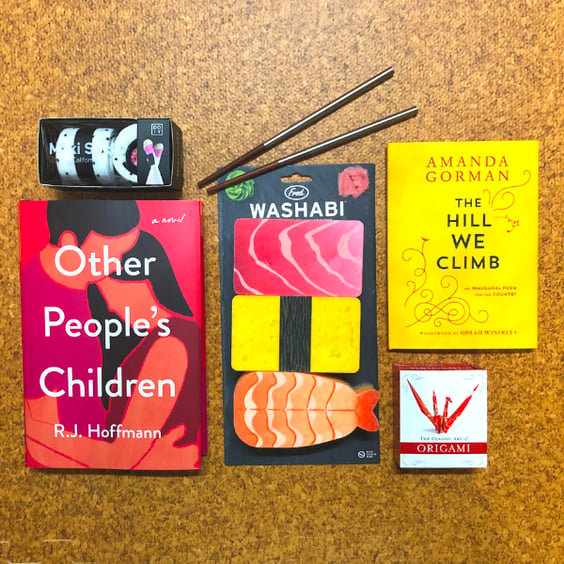
Custom gift bundles from Trident.
Once you can tailor your bundles to your customer’s shopping goals and personalities – test! Test different combinations of products to see what drives click behavior.
Test different bundling locations (e.g., on the PDP, options for add-to-cart, or in an email campaign).
And test different bundling strategies too! From mix-and-match to leader bundling to see what works.
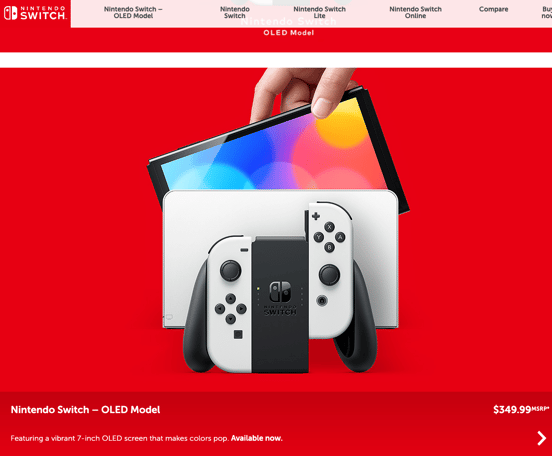
When Nintendo offered the option to buy a video game console and a game together as a package (with the option to buy each separately), they sold a record number of products.
But when they stuck to pure bundling, sales decreased. Shoppers today (and especially eCommerce shoppers) want autonomy as they explore and discover your products.
If you force a shopper to buy extra products they don’t want, this can quickly become a Dark Pattern – a psychological pitfall you want to avoid at all costs.
For your product bundling strategy to work, it’s important you keep in mind the psychology, examples, and best practices we’ve discussed throughout this article.
And don’t forget that your eCommerce shoppers want:
Have this at the forefront of your mind at all times, and you’ll win the product bundling race. To boost your on-site product discovery experience in new and exciting ways.
You got this ;)